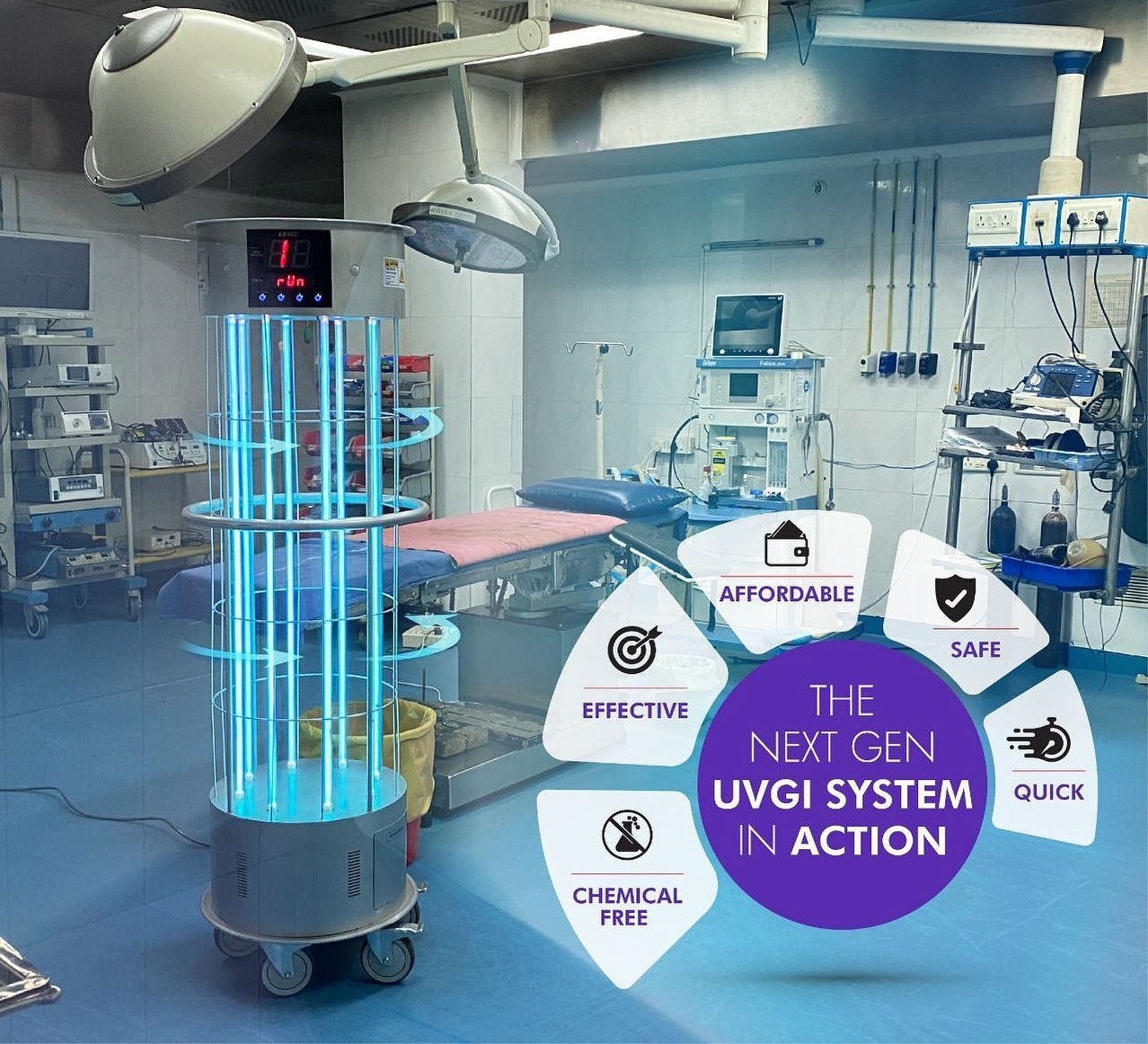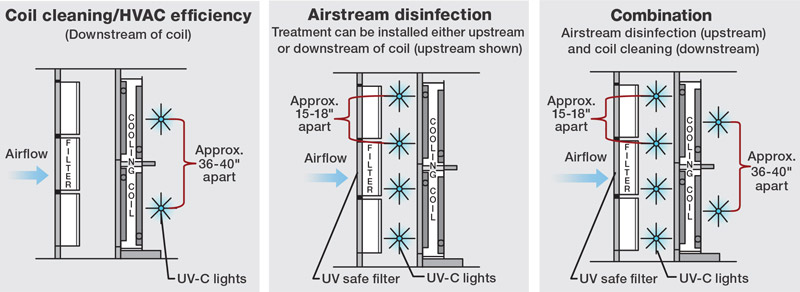UV Surface Disinfection Made Simple: Applying Ideal Practices for Optimum Outcomes
UV Surface Disinfection Made Simple: Applying Ideal Practices for Optimum Outcomes
Blog Article
UV Disinfection: The Cutting-Edge Modern Technology Transforming Hygiene Practices
In the world of sanitation practices, one technology has arised as a game-changer: UV disinfection. From healthcare setups to food processing, UV sanitation is making its mark in various sectors.
Exactly How UV Disinfection Works
UV sanitation works by making use of ultraviolet light to ruin or inactivate microbes, offering a chemical-free and extremely efficient approach of cleanliness. This modern technology uses the power of short-wavelength UV-C light, which can harming the DNA and RNA of bacteria, hence making them incapable to replicate and create injury.
The process starts with the installment of UV disinfection systems, which contain UV lamps that produce UV-C light. These lights are purposefully put in areas where microbial contamination is an issue, such as water therapy plants, hospitals, laboratories, and food processing facilities.
When bacteria are exposed to UV-C light, the photons permeate their cell walls and reach the DNA and RNA inside. The high-energy UV-C photons interfere with the hereditary product by creating bonds between nearby nucleotides, leading to the formation of thymine dimers. These dimers avoid the microbes from replicating, making them safe.
UV disinfection is extremely efficient against a wide variety of bacteria, consisting of infections, parasites, and bacteria. It is specifically reliable versus waterborne pathogens like E. coli, Giardia, and Cryptosporidium. UV disinfection is a chemical-free method, getting rid of the demand for potentially unsafe anti-bacterials and decreasing the danger of dangerous disinfection byproducts.
Benefits of UV Sanitation
UV sanitation provides numerous benefits in the field of cleanliness, making it a highly favored technique for effectively eliminating harmful microbes. Unlike typical sanitation approaches that rely on chemicals, UV sanitation makes use of ultraviolet light to ruin the DNA of bacteria, rendering them not able to duplicate and create infections.

UV disinfection is also very functional in its applications. It can be used in numerous settings, consisting of medical facilities, schools, food handling facilities, and water treatment plants. UV disinfection systems can be quickly incorporated right into existing hygiene practices, offering an added layer of defense versus contagious conditions.
In addition to its performance and versatility, UV sanitation is additionally eco pleasant. It does not create any type of damaging by-products or residues, making it a lasting and secure technique for cleanliness - uv surface disinfection. Moreover, UV sanitation needs very little maintenance and has a lengthy life-span, leading to expense savings over time.
UV Sanitation in Health Care Setups
In medical care settings, UV disinfection has arised as a cutting-edge technique for effectively getting rid of unsafe bacteria. UV sanitation works by discharging ultraviolet light at a particular wavelength that is lethal to germs, viruses, and various other microbes.
Firstly, UV sanitation is a non-chemical approach, making it an environmentally pleasant alternative compared to conventional sanitation methods that usually entail using extreme chemicals. Making use of UV light gets rid of the requirement for chemical disinfectants, reducing the danger of hazardous residue or chemical exposure to both individuals and healthcare workers.
Additionally, UV disinfection is highly reliable in killing a variety of microorganisms, including drug-resistant germs such as MRSA and C. difficile. It offers a reputable and consistent sanitation procedure, making sure that all surface areas and devices are extensively sanitized, also in hard-to-reach areas.

UV Sanitation in Food Processing
The application of UV disinfection extends beyond medical care setups and discovers considerable worth in the world of food handling. uv surface disinfection. UV sanitation technology is coming to be progressively popular in the food industry because of its capability to successfully eliminate hazardous virus and enhance food security
Among the major benefits of UV sanitation in food processing is its ability to target a wide variety of bacteria, consisting of viruses, molds, and microorganisms. By utilizing UV light at details wavelengths, it is feasible to interfere with the DNA and RNA of these virus, providing them incapable to cause or recreate damage. This modern technology can be applied to different phases of the food handling chain, consisting of surface area sanitation, devices sterilization, and water treatment.
UV disinfection offers a non-thermal and chemical-free method of sterilizing food. Unlike typical disinfection methods that depend on chemicals navigate to this site or warm, UV innovation does not leave any kind of deposit or change the taste, appearance, or nutritional worth of the food. This makes it a suitable service for check my reference sectors that need rigorous adherence to high quality criteria.
Moreover, UV disinfection systems are easy to install and run, calling for marginal maintenance. They can be integrated into existing processing lines without causing considerable disturbances to the manufacturing procedure. Furthermore, UV systems have a quick therapy time, enabling continual processing and decreasing downtime.
The Future of UV Sanitation

One location where UV disinfection is expected to make significant innovations is in the area of medical care. With the increase of antibiotic-resistant germs and the need for extra efficient disinfection techniques, UV light has the potential to play an important role in lowering healthcare-associated infections. UV disinfection systems can be utilized to decontaminate surface areas, equipment, and even the air in healthcare facilities, assisting to avoid the spread of harmful virus and boost person security.
An additional industry that could gain from developments in UV sanitation modern technology is the food industry. UV light has actually currently proven to be a reliable technique for decontaminating food and reducing the risk of foodborne health problems. As modern technology boosts, we can expect to see a lot more cost-effective and reliable UV sanitation systems being applied in food processing plants, making sure that the food we eat is safe and complimentary from damaging microorganisms.
Verdict
To conclude, UV click this site sanitation is a cutting-edge innovation that is transforming sanitation techniques in health care setups and food processing. By utilizing UV light to kill or shut off microbes, it offers countless advantages such as safety and security, efficiency, and efficiency. With continuous improvements in this field, UV disinfection holds great prospective for the future of hygiene, providing a trusted and sustainable solution for preserving clean and hygienic atmospheres.
UV sanitation is a chemical-free method, getting rid of the requirement for possibly harmful anti-bacterials and lowering the risk of dangerous sanitation byproducts.
Unlike typical disinfection methods that depend on chemicals, UV sanitation makes use of ultraviolet light to destroy the DNA of bacteria, providing them incapable to recreate and create infections. Unlike traditional disinfection techniques that count on chemicals or heat, UV innovation does not leave any type of deposit or change the preference, texture, or nutritional worth of the food. As modern technology enhances, we can expect to see extra reliable and cost-effective UV sanitation systems being applied in food handling plants, making certain that the food we take in is secure and complimentary from hazardous bacteria.
In conclusion, UV disinfection is an innovative modern technology that is transforming hygiene practices in health care setups and food processing.
Report this page